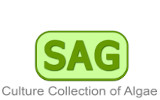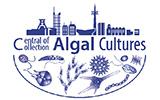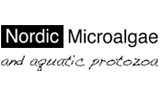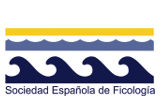Mazzaella convoluta (Areschoug ex J.Agardh) Hommersand 1994
Publication Details
Mazzaella convoluta (Areschoug ex J.Agardh) Hommersand 1994: 198 (table 4)
Published in: Hommersand, M.H., Fredericq, S. & Freshwater, D.W. (1994). Phylogenetic systematics and biogeography of the Gigartinaceae (Gigartinales, Rhodophyta) based on sequence analysis of rbcL. Botanica Marina 37: 193-203, 2 figs, 3 tables.
Type Species
The type species (holotype) of the genus Mazzaella is Mazzaella californica (J.Agardh) G.De Toni.
Status of Name
This name is of an entity that is currently accepted taxonomically.
Basionym
Gigartina convoluta Areschoug ex J.Agardh
Type Information
Type locality: Cape of Good Hope ; (INA 1996) Type: Areschoug 52; (INA 1996) Notes: Isotype: LD (Hommersand et al. 1993: 112).
General Environment
This is a marine species.
Created: 10 February 1998 by M.D. Guiry.
Last updated: 13 June 2014
Verification of Data
Users are responsible for verifying the accuracy of information before use, as noted on the website Content page.
Distributional note
John Bolton wrote (algae-l, 7 March 2001):
“We must remember that there are other categories as well as 'extinct'. Many years ago, one of our angiosperm taxonomists, who was writing a red data book, asked me if any seaweeds were 'critically rare'. I am not sure I have an answer, but as far as South African west coast species are concerned, my answer might be: Most species are rather widespread in distribution, even if they are uncommon in the range (the larger species we know about anyway). The vast majority seem to be good dispersers along coastlines, and probably spread to their ecophysiological limits (which is very different from South African flowering plants, where every mountain tends to have different species). There are very few seaweeds where we are fairly confident that they have restricted
distributions (perhaps signifying poor dispersal capabilities?). One example might be Cystophora fibrosa, which is a large unusual fucoid, more or less confined to two sites about 60km apart, either side of the southern tip of Africa (Cape Agulhas). If it is a Cystophora (which Womersley argues against) it is the only Cystophora outside Australasia. One of the sites it has been found is in De Hoop Nature Reserve.
A student from Sydney who is working on chemical taxonomy of Cystophora's (Damien Laird) went looking for it in January, and eventually found it at both sites after much shore searching. Could a case be made that it is 'critically rare' (as well as being
interesting from a genetic diversity perspective) and thus as important as other 'critically rare' plants at De Hoop?
The only other (less likely) example I can think of is the fairly small red seaweed Mazzaella convoluta, which occasionally appears in student transects, but which has never been recorded, to my knowledge, anywhere but on the shores of the Cape Peninsula - a range of less than 50km.” - (11 May 2006) - G.M. Guiry
Linking to this page: https://www.algaebase.org/search/species/detail/?species_id=3508
Citing AlgaeBase
Cite this record as:
M.D. Guiry in Guiry, M.D. & Guiry, G.M. 13 June 2014. AlgaeBase. World-wide electronic publication, National University of Ireland, Galway. https://www.algaebase.org; searched on 17 June 2025















